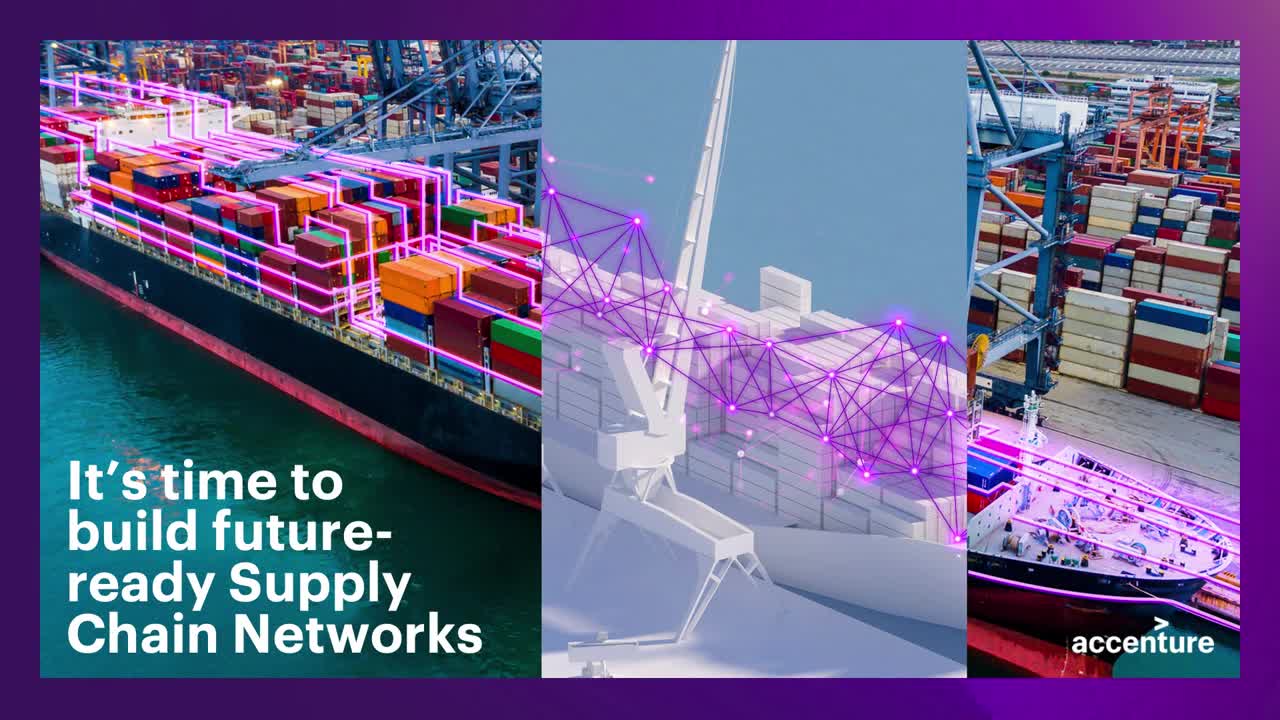Blog
The global supply chain isn't over. It's reinventing itself.
3-minute read
September 22, 2022
Blog
3-minute read
September 22, 2022
With yet another recent wave of disruptions, many supply chain and manufacturing executives are concerned. They ask themselves: is globalization over? It’s a great question.
We say it’s not. What we’re seeing is the second wave of the globalized supply chain. It’s something we discussed in our recent talk at the L’Attitude conference. Companies are no longer moving production offshore just for lower-cost labor. Production is coming closer to consumption. This is helping companies reduce carbon emissions and serve consumers more effectively. The pandemic has ended just-in-time manufacturing. It’s given birth to a new future supply chain network that’s more resilient, flexible and sustainable.

We’re at the dawn of a new phase of investments in manufacturing in North America. According to Accenture analysis, from Q1 2020 to the second quarter of this year, manufacturing investment project announcements in North America rose by 282%, or $43 billion. New factories are opening in the US. They will look radically different from those shuttered decades ago when production moved overseas.
Consider the initial responses from companies in North America in a recent global Accenture study. We explored how companies are shifting their manufacturing and global sourcing. They are now looking to onshore, near-shore and new friend-shore production locations. This effort included more than 1,000 executives at companies with US operations and revenues of over $1 billion. And the results are quite eye-opening.
of companies are planning direct investment in onshoring or nearshoring.
think manufacturing closer to home is key to survival.
want their factories to be within four time-zones of the customer.
think they can continue to grow with their current manufacturing footprint.
The big headline: 94% of executives say their organizations are planning to invest in onshoring or nearshoring. The term “reshoring” has become a buzz word. Bank of America reports that in today’s corporate earnings calls, “reshoring” is mentioned 12x more when compared to 2019. These stats are consistent with a finding from the Accenture CxO Pulse Survey. The survey notes that 96% of CxOs consider reshoring an important priority for their business.
We also found 54% of supply chain and manufacturing executives think building manufacturing capacity closer to home is very important and essential to their survival. In fact, 78% want their factories to be within four time-zones of the customer. 52% want it to be less than 1000 miles from the customer. But they want their entire supply chain closer together. For example, 85% want their factories and incoming material sources to be in the same hemisphere.
Here's another big find. Only 1% of companies said they can grow revenue and profits with their current manufacturing footprint. Think about that for a minute. Virtually all companies in our research think they need to change where they make their products.
The factories being built onshore or nearshore won’t resemble the factories of yesterday. As the need for automation to improve productivity and enhance safety and quality is increasing, we anticipate that any new plant facilities will be built to ‘factory of the future’ standards leveraging technology, data and AI to reach intelligent and sustainable operations.
— Aaron Saint, Senior Managing Director - Industry X and Supply Chain & Operations, North America Lead
More than half of respondents say their businesses are performing large-scale digital transformations as they move onshore or nearshore. 40% of executives believe that today’s next-gen plant-floor technology can reduce cost of goods sold by 3-5%.
Of course, a new type of workforce will be required to power these new smart factories. Companies will need many more automation and robotics technicians. According to 40% of executives, these are their most difficult manufacturing skills to fill. This is why most companies in our study are proactively working to develop new skills in their existing employees. They aim to prepare them to excel in their factories of the future. It’s a trend that’s also clear in the latest Accenture CxO Pulse Survey. Addressing skills shortages and keeping talent are the biggest priorities for 96% of executives in the next 12 months.
Consider all the supply chain disruption we’ve experienced in the past 30 months. It’s no surprise we’ve reached this critical inflection point. Companies are moving beyond just figuring out how to respond to disruption. They’re now rethinking their foundations and the competitive advantage their supply chain and manufacturing operations can drive. Supply chains are no longer viewed as a cost center. Rather, the supply chain is now an engine for growth and profit. The reinvention of supply chains could help companies meet the rising consumer demand for hyper-personalized experiences at scale. To deliver on that, the supply chain — and the broader supply chain networks — must become much more agile, resilient and sustainable. That’s the recipe for success in the coming years.
NOTE: Since we recorded the video above, we have updated our findings. The blog has the most recent data and insights.